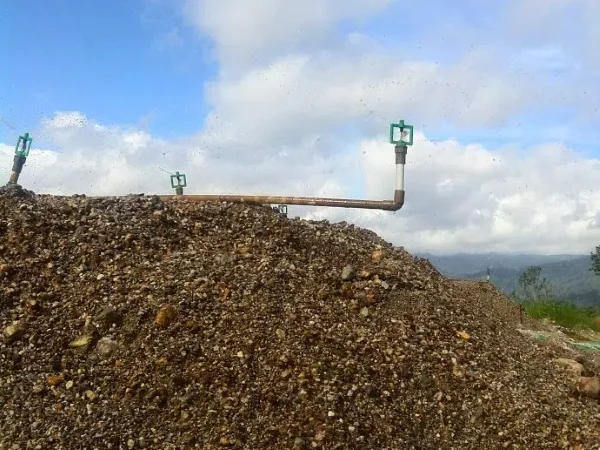
Introduction
The extraction of gold from its ores has been a subject of great interest for centuries. Among the various methods available, Cyanide leaching has emerged as one of the most widely used techniques in the commercial Gold mining industry. This process allows for the efficient dissolution of gold from its host materials, making it possible to recover the precious metal in a more concentrated form. This article will delve into the complete process of cyanide leaching in gold mining, from the initial dissolution of gold in cyanide solutions to the final recovery of the metal.
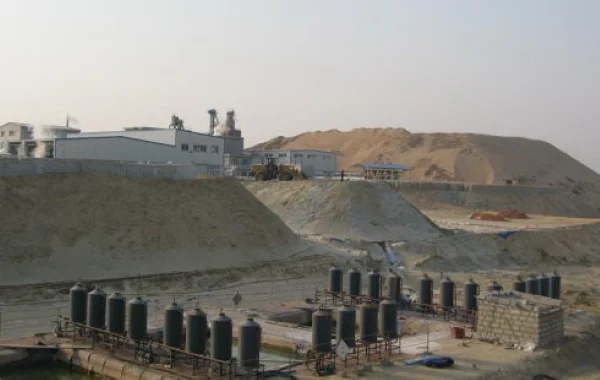
The Dissolution of Gold in Cyanide Solutions
Chemical Reactions Involved
The dissolution of gold in cyanide solutions is based on a complex series of chemical reactions. The overall reaction can be represented by the following equation:
4Au + 8NaCN + O₂ + 2H₂O → 4Na[Au(CN)₂] + 4NaOH
In this reaction, gold (Au) reacts with Sodium cyanide (NaCN) in the presence of oxygen (O₂) and water (H₂O) to form sodium dicyanoaurate (Na[Au(CN)₂]) and sodium hydroxide (NaOH). The role of oxygen in this reaction is crucial as it acts as an oxidizing agent, facilitating the dissolution of gold.
Conditions for Optimal Dissolution
For efficient dissolution of gold, several conditions need to be carefully controlled. The concentration of cyanide in the solution is a critical factor. Typically, a concentration of 0.05 - 0.1% NaCN is used in the leaching process. A higher concentration may lead to increased consumption of cyanide without a proportional increase in gold dissolution, while a lower concentration may result in slow and incomplete leaching.
The pH of the solution also plays a significant role. The leaching process is most effective in a slightly alkaline medium, with a pH range of 9.5 - 11. At this pH, the cyanide ions are present in their un-dissociated form (HCN), which is more reactive towards gold. Adjusting the pH is usually achieved by adding lime (CaO) to the leaching solution.
Temperature is another important parameter. Although the reaction can occur at ambient temperatures, a slightly elevated temperature of around 25 - 35°C can enhance the rate of gold dissolution. However, increasing the temperature too much can lead to the decomposition of cyanide, reducing its effectiveness.
Pre-treatment of Ores
Crushing and Grinding
Before the cyanide leaching process can begin, the gold-bearing ores need to be pre-treated. The first step in this pre-treatment is usually Crushing and Grinding. The ores are crushed to reduce their size and then ground into fine particles. This increases the surface area of the ore, allowing for more efficient contact between the gold particles and the cyanide solution during the leaching process.
The degree of grinding is carefully controlled. Over-grinding can lead to the formation of fine slimes, which can cause problems during subsequent solid-liquid separation steps. On the other hand, under-grinding may result in insufficient exposure of the gold particles, leading to incomplete leaching.
Roasting and Bio-oxidation
In some cases, the gold ores may contain refractory minerals that prevent the direct dissolution of gold by cyanide. For such ores, additional pre-treatment methods such as roasting or bio-oxidation may be required.
Roasting involves heating the ore in the presence of air to oxidize the refractory minerals, such as sulfides. This oxidation process breaks down the minerals, releasing the gold particles and making them more accessible to the cyanide solution.
Bio-oxidation, on the other hand, uses microorganisms to oxidize the refractory minerals. This is a more environmentally friendly alternative to roasting as it operates at lower temperatures and produces fewer harmful emissions. The microorganisms, typically bacteria or fungi, are selected based on their ability to oxidize the specific refractory minerals present in the ore.
The Leaching Process
Stirred Tank Leaching
Stirred tank leaching is one of the most common methods used for cyanide leaching. In this process, the pre-treated ore is mixed with the cyanide solution in large stirred tanks. The tanks are equipped with agitators that ensure thorough mixing of the ore and the solution, promoting the contact between the gold particles and the cyanide ions.
The leaching time can vary depending on the nature of the ore and the operating conditions. In general, the leaching process can take anywhere from several hours to several days. During this time, samples of the leachate are periodically taken and analyzed to monitor the progress of gold dissolution.
Heap Leaching
Heap leaching is another widely used method, especially for low-grade gold ores. In this process, the crushed ore is stacked in large heaps on an impermeable liner. The cyanide solution is then sprayed onto the top of the heap and allowed to percolate through the ore. As the solution passes through the heap, it dissolves the gold particles, and the resulting pregnant solution is collected at the bottom of the heap.
Heap leaching is a more cost-effective method compared to Stirred tank leaching as it requires less capital investment in equipment. However, it is a slower process and is more suitable for ores with relatively low gold content.
Solid-Liquid Separation
Filtration
After the leaching process is complete, the next step is to separate the solid residue (tailings) from the pregnant solution, which contains the dissolved gold. Filtration is one of the most commonly used methods for solid-liquid separation. In this process, the slurry (mixture of solid and liquid) is passed through a filter medium, such as a filter cloth or a filter press. The solid particles are retained on the filter medium, while the liquid (pregnant solution) passes through and is collected.
The choice of filter medium depends on the nature of the solid particles and the operating conditions. For example, in cases where the solid particles are very fine, a more fine - meshed filter cloth may be required.
Decantation
Decantation is another method that can be used for solid-liquid separation, especially when the solid particles are relatively large and settle easily. In this process, the slurry is allowed to stand in a settling tank for a period of time. The solid particles settle to the bottom of the tank due to gravity, and the clear supernatant liquid (pregnant solution) is then carefully decanted off.
Decantation is a simpler and less energy - intensive method compared to filtration. However, it may not be as effective in separating very fine solid particles.
Recovery of Gold from the Pregnant Solution
Activated Carbon Adsorption
One of the most common methods for recovering gold from the pregnant solution is Activated carbon adsorption. In this process, activated carbon is added to the pregnant solution. The gold - cyanide complex has a strong affinity for the surface of the activated carbon, and as a result, the gold is adsorbed onto the carbon particles.
The carbon particles are then separated from the solution, usually by screening or filtration. The gold - loaded carbon is then further processed to desorb the gold. This is typically done by subjecting the carbon to a high - temperature steam treatment or by using a chemical desorption agent.
Zinc Precipitation
Zinc precipitation, also known as the Merrill - Crowe process, is another method for gold recovery. In this process, zinc dust is added to the pregnant solution. Zinc is more electropositive than gold, and as a result, it displaces the gold from the gold - cyanide complex. The reaction can be represented by the following equation:
2Na[Au(CN)₂] + Zn → 2Au + Na₂[Zn(CN)₄]
The precipitated gold, along with any unreacted zinc, forms a solid sludge. This sludge is then separated from the solution, and the gold is further refined to obtain a pure product.
Refining of Gold
Smelting
Once the gold has been recovered from the pregnant solution, it usually needs to be refined to remove any remaining impurities. Smelting is one of the most common methods for gold refining. In this process, the gold - containing material is heated to a high temperature in the presence of a flux, such as borax. The flux helps to lower the melting point of the gold and also reacts with the impurities, forming a slag that can be separated from the molten gold.
The molten gold is then poured into molds to form ingots. These ingots can be further processed or sold as a semi - finished product.
Electrolytic Refining
Electrolytic refining is a more advanced method for gold refining. In this process, the gold - containing anode is placed in an electrolytic cell along with a pure gold cathode. The electrolyte is usually a solution of gold chloride or other gold salts. When an electric current is passed through the cell, the gold from the anode dissolves into the electrolyte and then deposits onto the cathode.
Impurities that are more electropositive than gold dissolve into the electrolyte but do not deposit onto the cathode, while impurities that are less electropositive than gold remain as a sludge at the bottom of the cell. This results in a very high - purity gold product.
Environmental Considerations
Cyanide Management
Cyanide is a highly toxic substance, and proper management of cyanide in the gold mining process is of utmost importance. The use of cyanide in gold mining is strictly regulated in many countries to minimize its impact on the environment and human health.
One of the key aspects of cyanide management is the prevention of cyanide spills. Mining operations are required to have proper containment systems in place to prevent cyanide - containing solutions from leaking into the environment. In addition, the treatment of cyanide - containing wastewaters is also crucial. There are several methods available for treating cyanide - containing wastewaters, such as chemical oxidation, biological treatment, and ion exchange.
Tailings Disposal
The solid residue (tailings) produced after the gold recovery process also needs to be properly disposed of. Tailings can contain trace amounts of cyanide and other heavy metals, which can pose a threat to the environment if not managed correctly.
One common method for tailings disposal is to store them in tailings dams. These dams are designed to contain the tailings and prevent the release of contaminants into the environment. In some cases, the tailings may also be re - processed to recover any remaining valuable minerals or to reduce the environmental impact.
Conclusion
The cyanide leaching process in gold mining is a complex and multi - step process that involves the dissolution of gold in cyanide solutions, pre - treatment of ores, leaching, solid - liquid separation, gold recovery, refining, and environmental management. Each step in this process is carefully controlled to ensure the efficient extraction and recovery of gold while minimizing the environmental impact. Despite the challenges associated with the use of cyanide, the process remains an important and widely used method in the commercial gold mining industry due to its high efficiency and relatively low cost. However, continuous research and development are being carried out to develop alternative methods that are more environmentally friendly and sustainable.
- Random Content
- Hot content
- Hot review content
- The Essential Guide to Sodium Cyanide: Usage Cases and Sourcing
- Sodium Metal, ≥99.7%
- Calcium Peroxide 60% Assay Yellowish Tablet
- Toluene
- Ammonium Persulfate Industrial Grade 98.5%
- Hydrogen Peroxide
- Diethylene Glycol
- 1Discounted Sodium Cyanide (CAS: 143-33-9) for Mining - High Quality & Competitive Pricing
- 2China's New Regulations on Sodium Cyanide Exports and Guidance for International Buyers
- 3Sodium Cyanide 98% CAS 143-33-9 gold dressing agent Essential for Mining and Chemical Industries
- 4International Cyanide(Sodium cyanide) Management Code - Gold Mine Acceptance Standards
- 5China factory Sulfuric Acid 98%
- 6Anhydrous Oxalic acid 99.6% Industrial Grade
- 7Oxalic acid for mining 99.6%
- 1Sodium Cyanide 98% CAS 143-33-9 gold dressing agent Essential for Mining and Chemical Industries
- 2High Quality 99% Purity of Cyanuric chloride ISO 9001:2005 REACH Verified Producer
- 3Zinc chloride ZnCl2 for High Molecular Weight Polymers Initiator
- 4High Purity · Stable Performance · Higher Recovery — sodium cyanide for modern gold leaching
- 5High Quality Sodium Ferrocyanide / Sodium Hexacyanoferr
- 6Gold Ore Dressing Agent Safe Gold Extracting Agent Replace Sodium Cyanide
- 7Sodium Cyanide 98%+ CAS 143-33-9

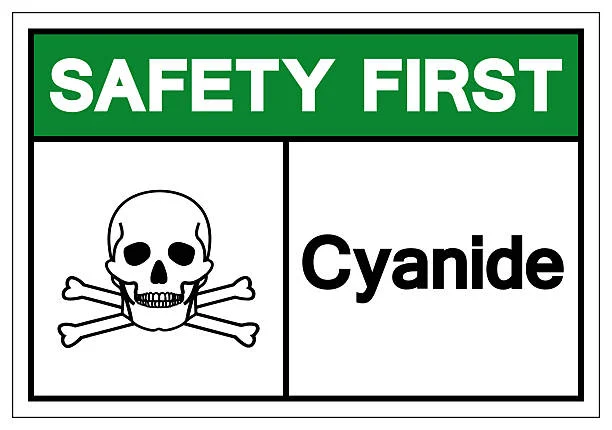
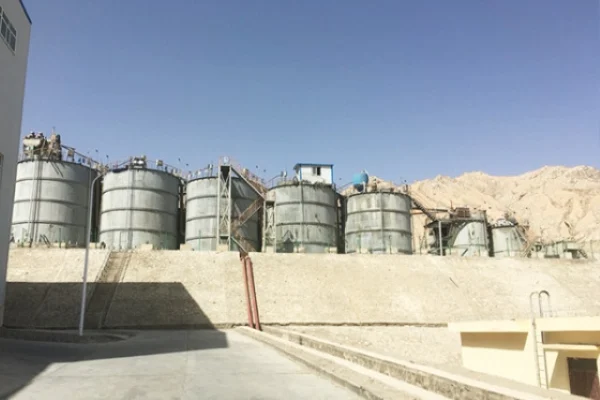
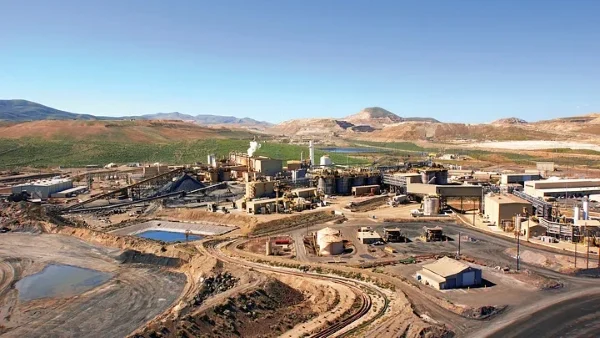

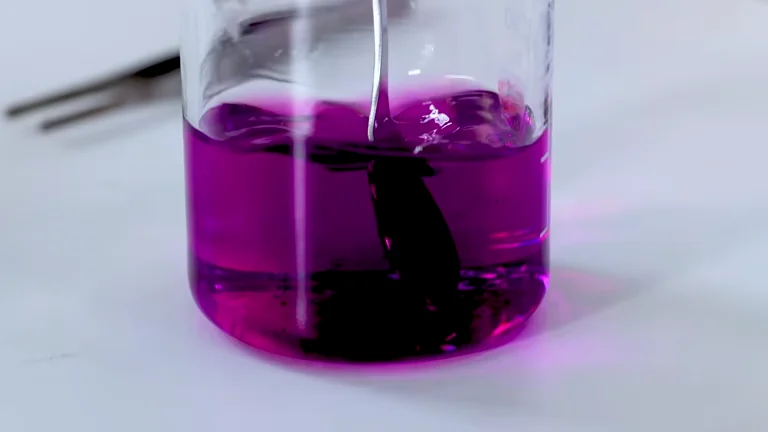





Online message consultation
Add comment: